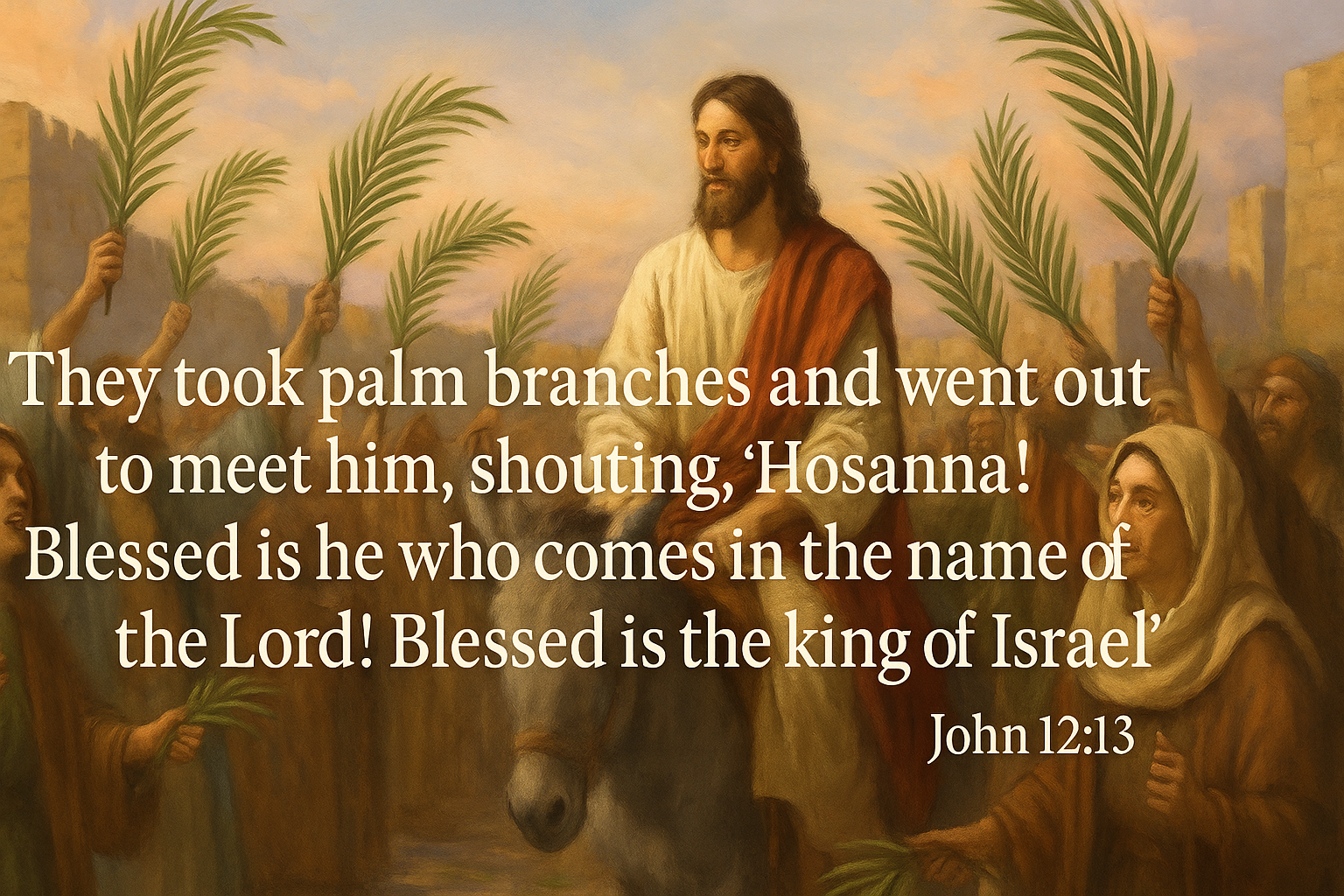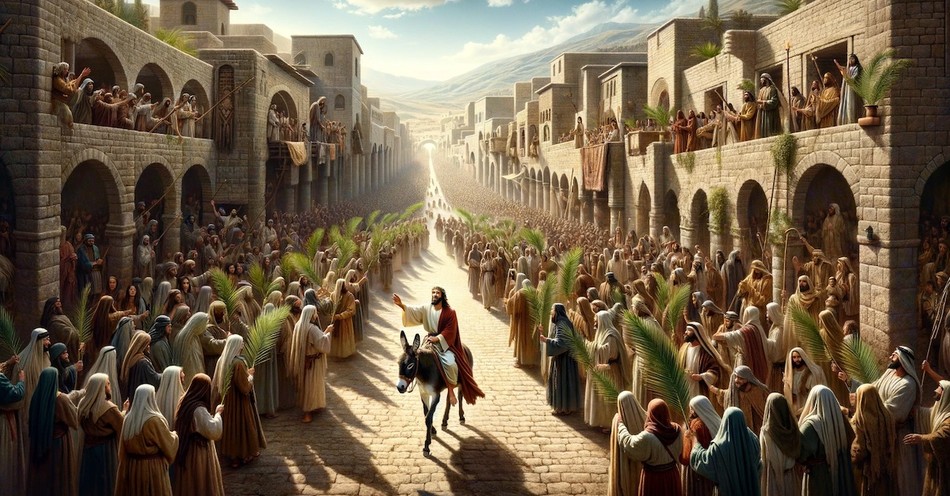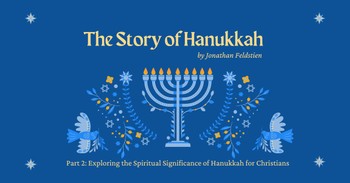As with each of our kids, my wife and I prayed and agreed upon a name before our third child was born. A daughter.
Yet, when my wife went into labor, God began speaking to me. He told me our daughter’s name was Hosanna. I brought it up with my wife after the birth in the hospital. If you’re married, you might imagine how that conversation went. Not well. I made it clear we could stick with the original name or go with Hosanna. My wife conceded to Hosanna.
Some months later, as the baby’s personality started to manifest, Becca admitted, yes, her name is Hosanna.
In Hebrew, Hosanna technically means “save us” or “save us now.” It appears as hoshia na in Psalm 118:25, “Save us, we pray, O Lord!” It’s a cry for help, for deliverance, especially during a time of oppression and chaos. Over time, it became a word of praise and celebration, as well. By the time of Jesus, they cried the word over him as he entered Jerusalem on what we now know as Palm Sunday, a few days before his crucifixion.
And for our family, we soon went through some distress—losing a job and struggling through the recession in 2008. We needed to remember and cry out to God for his grace to keep and save us. Hosanna, indeed.
What Is Palm Sunday?
Palm Sunday begins Holy Week. It observes Jesus’ triumphal entry into Jerusalem, an event recorded in all four gospels. As Jesus rode into the city on a donkey, the crowds welcomed him by laying down palm branches and their cloaks on the road. They shouted, “Hosanna! Blessed is he who comes in the name of the Lord!” The Jews celebrated him as the promised Messiah and King. The use of palm branches led to the name of the holiday, Palm Sunday.
The early church started celebrating Palm Sunday by the fourth century. Christian pilgrims would come to Jerusalem and trace the path from the Mount of Olives into the city, waving palm branches and singing hymns of praise. This became a regular and formal remembrance and was ultimately included in Christian liturgy. By the Middle Ages, churches across Europe had adopted the observance, even blessing palm leaves and holding processions before the Sunday Mass.
Christians around the world continue to observe Palm Sunday as the joyful opening to Holy Week. Churches will hand out palm branches or a substitute (olive or willow branches, depending on local vegetation), and the fellowship might reenact the Bible story. The day reminds believers of Jesus’ role as King and Messiah, and the praise he deserves. However, it holds a certain complexity, foreshadowing how the same crowd would later turn on Jesus and say, “Crucify Him!”

Why Did Jesus Ride on a Donkey?
As Jesus approached Jerusalem, he told two of his disciples to go into the village, where they would find a donkey. He told them exactly where to find it and what to say if anyone asked them questions. Everything happened as Jesus said. The disciples found the colt and brought it to Jesus. He then rode the animal into the City of David, greeted by crowds who spread palm branches and their own cloaks on the road. They shouted “Hosanna!”, which was both a word of praise and a cry for deliverance from Roman oppression.
The choice to ride a donkey fulfilled a prophecy from Zechariah 9:9: “Rejoice greatly, Daughter Zion! Shout, Daughter Jerusalem! See, your king comes to you, righteous and victorious, lowly and riding on a donkey, on a colt, the foal of a donkey.” Zechariah wrote this during a time of Jewish subjugation, under Persia, who had allowed the people of God back to Jerusalem after a long exile. This Messianic prophecy looked ahead to when the people of Jerusalem would celebrate a new king.
This Messiah, however, came humbly. Not as a warrior in armor with a sword but peaceful and gentle on a donkey. In the ancient world, rulers rode donkeys during a time of peace and horses during a war. By riding a donkey, Jesus expressed how his Kingdom wouldn’t come by force or violence but by love and peace. Christ would bring salvation through humility.
Also, Jesus on a donkey connected to David’s lineage. Solomon, the son of David, rode a mule when he was anointed king (1 Kings 1:33). Jesus, the anointed and Messianic Son of David, entered Jerusalem to fulfill God’s epic plan of redemption. His revolution would be one of peace and compassion. Christ would conquer by self-sacrifice, not a sword of steel.
What Is Important about Palm Branches and the Crowd’s Praise?
Historically, palm branches meant victory and deliverance. The biblical background came from another feast, Sukkot, or the Feast of Tabernacles, when people used palm branches to rejoice before God and build temporary shelters to remind them of the Lord’s provision in the wilderness (Leviticus 23:40). During the Maccabean revolt two hundred years before, Jews used palm branches to celebrate their military victories and rededicate the Temple. By Jesus’ time, palms had become a national symbol of hope and freedom from Roman oppression, for the Jews to have their own king and kingdom again.
Therefore, when the crowd waved palms, they declared him the coming, victorious Messiah to deliver them from Rome and establish the new Jerusalem kingdom the Old Testament prophesied. In addition, Jesus rode into the city at the beginning of Passover, which observed God’s deliverance from another oppressive regime, Egypt. With thousands of Jews in Jerusalem for Passover, all this combined for a massive, emotional event.
The cloaks also had significance. In those days, spreading garments before someone symbolized honor and submission, like for royalty. By placing their cloaks before Jesus, they further treated him as a king, one they chose to submit to. Biblically, it hearkened back to the coronation of Jehu in 2 Kings 9:13.
In three of the four gospels (Matthew, Mark, and Luke), Jesus dismounts from the donkey and immediately goes into the Temple to cleanse the outer court of greedy moneychangers. He took the time to make a whip and beat them out, overturning tables and shouting, “My Father’s house is a house of prayer!” He mourned how they had made it a “den of thieves.” These merchants made money off of travelers and those coming to give to God, and they took up space reserved for the poor and marginalized (the outer court). Here, Jesus acts as both King and High Priest, the full Messianic identity.
The gospel writers mention how the crowd’s praise and Jesus’ cleansing of the Temple made further enemies of the Jewish leaders. Offended and outraged, the Jewish leaders sought ways to arrest and kill Jesus, eventually leading the same crowd who cried “Hosanna” to say “Crucify him” on Friday.
How Do Christians Today Observe Palm Sunday?
Roman Catholic churches hold a special Mass on Palm Sunday, starting with blessing the palms outside the church. A reading from Scripture shares the story of Jesus’ entry into Jerusalem. Next comes a contemplative procession into the sanctuary. The Mass then includes reading the Passion narratives, reminding the congregation how the joy of Palm Sunday led to the sorrow of the crucifixion.
Eastern Orthodox believers refer to Palm Sunday as the “Entry of the Lord into Jerusalem.” They celebrate it with joyous praise, becoming one of the Twelve Great Feasts. Palms or local branches are blessed and given out. The liturgy has hymns and readings expressing Christ’s kingship and humility. In a few traditions, children represent the joyful Jerusalem crowds.
For more liturgical Protestant denominations (Lutheran, Anglican, Methodist, and Presbyterian), processions with palm branches or something similar are also held. To introduce Holy Week, they read the story of the triumphal entry, possibly the Passion narrative. More evangelical congregations have simpler traditions, generally celebrating through praise songs and sermons focusing on Jesus as King.
What Are Some Prayers for Palm Sunday?
One common prayer includes a praise:
Hosanna to the Son of David! Blessed is he who comes in the name of the Lord! King of Israel, Hosanna in the highest!
Another prayer might be:
Lord Jesus, we praise you as the true King and Savior. As you entered Jerusalem to lay down your life, enter our hearts and reign there. Teach us to follow you not only in joy, but also in suffering, with steadfast love. Amen.
A prayer of confession might be:
Lord, forgive us when we, like the crowd, honor you with our lips but not with our lives. Help us stay faithful, even in times of trial. Amen.
How Can We Welcome Jesus as King in Our Lives?
We welcome Jesus as King by fully and willingly submitting our whole lives to him, including our expectations and hearts. When Jesus entered Jerusalem, they expected a political leader, a physical conqueror, someone to raise up an army and defeat Rome to restore the old Israel. Jesus didn’t meet their expectations, however. He came as a humble servant, putting to shame spiritual powers on the cross (Colossians 2:15).
Today, as humans, we still struggle with false expectations of Jesus. Some want a king who solves all the problems, gives success, wealth, comfort, or control. But Jesus calls us to lay down our will, take up our cross, and follow him. Welcoming Jesus as King means surrendering our entire will unto his, submitting our desires, ambitions, fears, and plans unto him who controls it all and loves us. We have to trust him, especially when things don’t go our way, or it doesn’t seem like it. During times of suffering and chaos, we must believe in faith that he redeems all things for our good (Romans 8:28).
To follow him as King, we must see him as he truly is. He’s more than a teacher, helper, or moralist. He’s the risen Lord who reigns over all creation, the seen and the unseen, heaven and earth. We need to die to our small-minded and limited vision and see by faith into the unseen and heavenly, trusting that his way will lead to life, peace, and joy far greater than we can think or imagine. This remains true particularly during difficult seasons. He alone can save and deliver, from both the spiritual and the physical. He beat death and sin and seeks to bless us abundantly.
When others speak against the King, trying to get us to choose another earthly revolutionary like Barabbas, whether political or religious, we must resist and remain faithful to the only true King. Because he’s worth it.
King Jesus offers an eternal victory through salvation, transforming the heart and giving us the power to live obediently by the Spirit, in freedom and love. As we surrender to the King, we get exponentially more than we lose. And what we lose, we never would have kept anyway. Jesus’ reign brings us great purpose, peace, and the promise of life forever with him in the Kingdom on the new earth.
Welcoming Jesus as King means choosing him above anyone or anything else, a daily choice. We let go of who we think he should be to receive the King who is and get the eternal benefits of following him alone.
Peace.
Read More about Palm Sunday:
What Is Palm Sunday Bible Story and Meaning Today?
Palm Sunday Hymns Worship Songs Holy Week
When Is Palm Sunday Holy Week Dates Timeline?
What Does 'Blessed Is He Who Comes in The Name of The Lord' Mean?
Why Did the Crowd Shout Hosanna in The Highest for Jesus?
What Is the Significance of The Timing Of Palm Sunday?
Image created using AI technology and subsequently edited and reviewed by our editorial team.





